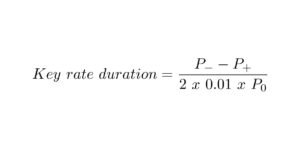How Does the K-Percent Rule Work?
Economist Milton Friedman proposed the K-Percent Rule, which calls for an annual increase of a certain percentage in the money supply by the central bank.
Knowing How to Apply the K-Percent Rule
According to the K-Percent Rule, the annual growth rate of the money supply should be fixed to match the pace of economic expansion. The gross domestic product, or GDP, is a measure of an economy’s growth in percentage terms for all products and services generated. In the United States, historical averages indicate that GDP growth rates typically range from 2 to 4%.
The K-Percent Rule would permit the economy’s money supply to increase with GDP growth.
Friedman argued that, independent of economic conditions, having central banking authorities automatically increase the money supply by a predetermined percentage or quantity (the “K” variable) every year was the best approach to stabilizing the economy over the long run.
According to Freidman, the money supply should be a 3%–5% annual increase. Fed officials have no discretion regarding monetary policy because of the K-percent rule. Since discretionary policy could result in errors and disproportionate monetary responses to economic situations, Friedman thought that monetary policy would be more successful under a rules-based framework.
As the nation’s central bank, the Federal Reserve controls the amount of money in circulation. Through various instruments, the Fed can raise the money supply if economic growth slows down, increasing lending through the banking sector. For instance, when interest rates are lowered, people usually rush to borrow more money, which they then use to buy cars, houses, and other goods. Through the creation of jobs and consumption, these purchases boost the economy and accelerate economic growth.
Milton Friedman was the creator of monetarism, a school of economics that identifies monetary expansion and associated policies as the primary cause of future inflation, and the author of the K-Percent Rule. Friedman also won the Nobel Prize in Economics.
A measure of an economy’s rate of price increases is called inflation. Workers’ wages would have less purchasing power if prices rose too quickly.
According to Friedman, monetary policy was the leading cause of the economy’s cyclical swings. Too little was known about the impacts of changing monetary policy to try and fine-tune the economy based on conditions outside the economy.
Friedman contended that the rule would aid in mitigating errors made by Federal Reserve officials. In the 1930s, for instance, the Fed reduced the amount of money in the American economy, which made the Great Depression worse.
Monetary Policy Discretionary
Although the U.S. Federal Reserve Board is knowledgeable about the benefits of the K-percent rule, most advanced economies base their monetary policy on the status of their economies. In a cyclically weak economy, the Federal Reserve and other policymakers want to increase the money supply more quickly than the K-percent rule would imply.
By contrast, most central banking authorities aim to limit the expansion of the money supply in a healthy economy. On the other hand, modern U.S. monetary policy is not a rules-based framework solely dependent on the state of the economy. Based on encouraging price stability and economic growth, the policy is instead discretionary.
Furthermore, Fed representatives can utilize their latitude and discretion to fight financial crises and economic shocks. For instance, the Federal Reserve (Fed) implemented several policies during the 2007–2008 financial crisis to stimulate economic development, including lowering interest rates to almost zero and starting a program to purchase U.S. Treasury bonds and other securities. A massive infusion of cash into the banking sector resulted from the Fed acting as a debt buyer.
Conclusion
- Milton Friedman proposed the K-Percent Rule, which said that the central bank should grow the money supply by a constant proportion every year.
- The K-Percent Rule suggests that money supply growth be fixed at a rate equal to GDP growth each year.
- Based on historical trends, this would be in the region of 2–4% in the United States.











































